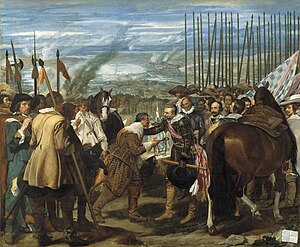
Back Batal janrı AZ Батальны жанр BE Батална живопис Bulgarian Militärkunst German Bataalne žanr ET Représentation de la guerre dans l'art French Մարտանկարչություն HY Milital arto IO Arte di guerra Italian ბატალური ჟანრი KA


Military art is art with a military subject matter, regardless of its style or medium. The battle scene is one of the oldest types of art in developed civilizations, as rulers have always been keen to celebrate their victories and intimidate potential opponents. The depiction of other aspects of warfare, especially the suffering of casualties and civilians, has taken much longer to develop. As well as portraits of military figures, depictions of anonymous soldiers on the battlefield have been very common; since the introduction of military uniforms such works often concentrate on showing the variety of these.
Naval scenes are very common, and battle scenes and "ship portraits" are mostly considered as a branch of marine art; the development of other large types of military equipment such as warplanes and tanks has led to new types of work portraying these, either in action or at rest. In 20th century wars official war artists were retained to depict the military in action; despite artists now being very close to the action the battle scene is mostly left to popular graphic media and the cinema. The term war art is sometimes used, mostly in relation to 20th century military art made during wartime.[1]
- ^ "War art" in the Oxford Companion to Military History, on Answers.com, and the article by Richard Woodward on "Military artists" in the same work (penultimate paragraph); note that the term does not appear at all in Grove Art Online, or other large art reference works. As formal "wars" have largely vanished, "combat artist" seems to be replacing "war artist" in official use.